Table of Contents
Introduction
The Great Catastrophe of Christian Civilization: The Outbreak of War in Europe
1
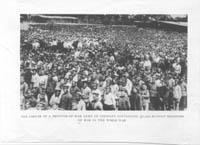 Walls of barbed wire imprisoned over six million soldiers and civilians during the First World War.1 The magnitude and complexity of the prisoner-of-war (POW) system quickly
grew far beyond the original planning and resources of the belligerent nations. All of the combatant nations were unprepared
for the unending streams of prisoners, which forced them to react to their mounting
POW burdens on an ad hoc basis. As each nation focused on the demands of total warfare, and as the conflict that
"would be over by Christmas" degenerated into a war of attrition, the POW became the "forgotten man," a burden to
his captors but beyond the assistance of his homeland.
Walls of barbed wire imprisoned over six million soldiers and civilians during the First World War.1 The magnitude and complexity of the prisoner-of-war (POW) system quickly
grew far beyond the original planning and resources of the belligerent nations. All of the combatant nations were unprepared
for the unending streams of prisoners, which forced them to react to their mounting
POW burdens on an ad hoc basis. As each nation focused on the demands of total warfare, and as the conflict that
"would be over by Christmas" degenerated into a war of attrition, the POW became the "forgotten man," a burden to
his captors but beyond the assistance of his homeland.
2
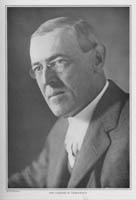 The Hague Conventions of 1899 and 1907 defined the responsibilities of captor nations regarding the care
and treatment of POWs. Captives were to be treated with "food, quarters and clothing, on the same footing as
the troops of the Government which has captured them."2
The care and welfare of war prisoners became an important diplomatic issue not only between belligerents, but
also for the neutral countries that accepted the responsibility of representing belligerent interests. Military
mobilization and the internment of thousands of enemy troops taxed the limited resources of small
neutral European states. As a result, they were unable to meet the needs of POWs detained behind the lines
of the warring nations. After Italy entered the war in May 1915, the United States remained the only neutral
great power capable of assisting POWs.3
The Hague Conventions of 1899 and 1907 defined the responsibilities of captor nations regarding the care
and treatment of POWs. Captives were to be treated with "food, quarters and clothing, on the same footing as
the troops of the Government which has captured them."2
The care and welfare of war prisoners became an important diplomatic issue not only between belligerents, but
also for the neutral countries that accepted the responsibility of representing belligerent interests. Military
mobilization and the internment of thousands of enemy troops taxed the limited resources of small
neutral European states. As a result, they were unable to meet the needs of POWs detained behind the lines
of the warring nations. After Italy entered the war in May 1915, the United States remained the only neutral
great power capable of assisting POWs.3
3
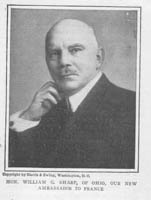 The Wilson Administration reacted to the events in Europe by establishing a hands-off policy towards all the
belligerents. President Woodrow Wilson's declaration that "the United States must be neutral in fact as well
as in name" applied to issues relating to war prisoners as well.4 Secretary of State William Jennings Bryan instructed American consular officials to avoid dealing
with any war-related issues, prohibiting inspection visits of prison camps. But diplomatic appeals by the
belligerent powers, combined with domestic political pressure, led the State Department to revise its policy by
December 1914. In a memorandum, Chandler Anderson, a State Department counselor, outlined the organization of
relief work for POW's under the supervision of the American Consular Service. In cooperation with other neutral
powers (primarily Spain), the United States agreed to administer belligerent interests in enemy territory by
inspecting prison camps, supervising the purchase and distribution of supplies, and allocating financial assistance
to prisoners.5
The Wilson Administration reacted to the events in Europe by establishing a hands-off policy towards all the
belligerents. President Woodrow Wilson's declaration that "the United States must be neutral in fact as well
as in name" applied to issues relating to war prisoners as well.4 Secretary of State William Jennings Bryan instructed American consular officials to avoid dealing
with any war-related issues, prohibiting inspection visits of prison camps. But diplomatic appeals by the
belligerent powers, combined with domestic political pressure, led the State Department to revise its policy by
December 1914. In a memorandum, Chandler Anderson, a State Department counselor, outlined the organization of
relief work for POW's under the supervision of the American Consular Service. In cooperation with other neutral
powers (primarily Spain), the United States agreed to administer belligerent interests in enemy territory by
inspecting prison camps, supervising the purchase and distribution of supplies, and allocating financial assistance
to prisoners.5
4 Anderson's memorandum expressed concerns that the American Consular Service would face major difficulties implementing this policy. American embassies lacked the infrastructure for relief operations on such a large scale. Diplomatic staffs were simply too small, and too overwhelmed by the crisis, to address even prison camp inspections adequately. Ambassador William Graves Sharp assigned one embassy official (John W. Garrett) to supervise inspections in France, but the actual investigations were conducted by volunteers. Second, the United States did not represent the interests of all of the belligerents; this diffusion of representation among the neutral powers complicated international POW deliberations. The United States served as an intermediary in lengthy and acrimonious negotiations between Germany and Britain, as well as Russia and Austria-Hungary, regarding prison camp inspections. Charges of abuse and threats of reprisals hindered the discussions, and a general inspection agreement was not concluded until March 1915.6
5
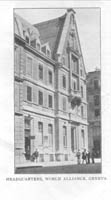 Most importantly, the American diplomatic corps had no experience providing social welfare assistance to
foreign nationals. At this time, the federal government did not even provide welfare services to American citizens,
so such relief was unlikely to be successfully administered by the Consular Service. Unless the Quartermaster Corps
of the United States Army organized and supervised the operations, the Wilson Administration acknowledged that
"private organizations" must join the effort for the U.S. to meet its international obligations. American social
welfare organizations already had the resources, organizational infrastructure, and trained personnel to administer
welfare services to war prisoners.7
Most importantly, the American diplomatic corps had no experience providing social welfare assistance to
foreign nationals. At this time, the federal government did not even provide welfare services to American citizens,
so such relief was unlikely to be successfully administered by the Consular Service. Unless the Quartermaster Corps
of the United States Army organized and supervised the operations, the Wilson Administration acknowledged that
"private organizations" must join the effort for the U.S. to meet its international obligations. American social
welfare organizations already had the resources, organizational infrastructure, and trained personnel to administer
welfare services to war prisoners.7
6
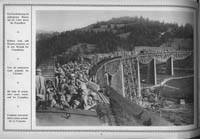 The American Young Men's Christian Association (YMCA, or simply the Association) rallied to this challenge and focused
its extensive resources on meeting the physical, mental, and spiritual needs of war prisoners. Working with the
World's Alliance of YMCAs, based in Geneva, and various national Associations in belligerent and neutral nations,
the YMCA mobilized on an international basis to assist war prisoners. POW War Work was among the first American
welfare service efforts of the war. YMCA assistance was offered to all prisoners, irrespective of national origin
or religious creed.8 This study examines the role of the
American YMCA in the two-step process of gaining access to and providing social welfare services for Allied
prisoners of war incarcerated in the prison camps of Germany, Austria-Hungary, Bulgaria, and Turkey during the
First World War.
The American Young Men's Christian Association (YMCA, or simply the Association) rallied to this challenge and focused
its extensive resources on meeting the physical, mental, and spiritual needs of war prisoners. Working with the
World's Alliance of YMCAs, based in Geneva, and various national Associations in belligerent and neutral nations,
the YMCA mobilized on an international basis to assist war prisoners. POW War Work was among the first American
welfare service efforts of the war. YMCA assistance was offered to all prisoners, irrespective of national origin
or religious creed.8 This study examines the role of the
American YMCA in the two-step process of gaining access to and providing social welfare services for Allied
prisoners of war incarcerated in the prison camps of Germany, Austria-Hungary, Bulgaria, and Turkey during the
First World War.
7
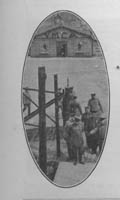 American Red Triangle9 representatives conducted extensive
diplomatic negotiations with belligerent governments to gain access to prison camps, with the support of the Wilson
Administration. Locked in total war, these governments were reluctant to provide neutral social workers access to
war prisoners without assurance that similar benefits would be granted to their soldiers languishing in enemy
prison compounds. After several months of negotiations, YMCA delegates received official approval from most
belligerent governments to allow Red Triangle secretaries to set up social welfare programs for POWs. Even after
access was secured, Red Triangle representatives had to continue to negotiate with belligerent governments to
expand welfare program activities and to prevent retaliatory policies that would curtail social relief efforts.
American Red Triangle9 representatives conducted extensive
diplomatic negotiations with belligerent governments to gain access to prison camps, with the support of the Wilson
Administration. Locked in total war, these governments were reluctant to provide neutral social workers access to
war prisoners without assurance that similar benefits would be granted to their soldiers languishing in enemy
prison compounds. After several months of negotiations, YMCA delegates received official approval from most
belligerent governments to allow Red Triangle secretaries to set up social welfare programs for POWs. Even after
access was secured, Red Triangle representatives had to continue to negotiate with belligerent governments to
expand welfare program activities and to prevent retaliatory policies that would curtail social relief efforts.
8
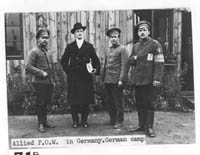 Once access to prison camps was secured, the International Committee of the American YMCA rushed in relief workers
to establish activities to address the mental, physical, social, and spiritual needs of war prisoners. The Association's
motivation-at least in terms of providing relief to the victims of war-was based on Christian charity, but their efforts also
served utilitarian goals, since secretaries strove to make the POWs' period of incarceration personally productive. With
the YMCA's assistance, prisoners could leave their compounds at the end of the war better men-mentally, spiritually,
and socially. But, as resources dwindled toward the end of the war, especially in the Central Powers, YMCA workers
focused on the physical needs of war prisoners to make sure that they survived their captivity. Red Triangle workers
also faced a variety of constraints, from insufficient staff to equipment limitations, in conducting their relief
operations. Despite these problems, the American YMCA performed an important service for Allied POWs in support of
U.S. wartime goals, and created a precedent for non-governmental organizations to become involved in social welfare
operations.
Once access to prison camps was secured, the International Committee of the American YMCA rushed in relief workers
to establish activities to address the mental, physical, social, and spiritual needs of war prisoners. The Association's
motivation-at least in terms of providing relief to the victims of war-was based on Christian charity, but their efforts also
served utilitarian goals, since secretaries strove to make the POWs' period of incarceration personally productive. With
the YMCA's assistance, prisoners could leave their compounds at the end of the war better men-mentally, spiritually,
and socially. But, as resources dwindled toward the end of the war, especially in the Central Powers, YMCA workers
focused on the physical needs of war prisoners to make sure that they survived their captivity. Red Triangle workers
also faced a variety of constraints, from insufficient staff to equipment limitations, in conducting their relief
operations. Despite these problems, the American YMCA performed an important service for Allied POWs in support of
U.S. wartime goals, and created a precedent for non-governmental organizations to become involved in social welfare
operations.
Notes:
Note 1: Some Central Power and Russian prisoners faced captivity for as long as seven years, as the Russian Civil War postponed their final repatriation until 1921. See Appendix A for an estimation of POW statistics. back
Note 2: United States Senate, "Convention with Respect to the Laws and Customs of War on Land," 29 July 1899, Geneva, Chapter II, Article VII, in Treaties, Conventions, International Acts, Protocols, and Agreements between the United States of American and Other Powers, Volume II: 1776-1909 (Part II) (New York: Greenwood Press, 1968), 2050. back
Note 3: Switzerland and the Netherlands were the chief neutral nations that held large numbers of belligerent nationals. Denmark, Norway, and Sweden held smaller numbers of interned military personnel. United States Senate, "Convention with Respect to the Laws and Customs of War on Land," 2050. back
Note 4: Woodrow Wilson, "Wilson's Appeal to the American People for Neutrality," 19 August 1914, in The Messages and Papers of Woodrow Wilson, Volume I (New York: The Review of Reviews Corporation, 1924), 217-19. back
Note 5: This political pressure was led by John Raleigh Mott, General Secretary of the International Committee of the Young Men's Christian Associations of North America from 1915-1931. William Graves Sharp, The War Memoirs of William Graves Sharp: American Ambassador to France, 1914-1919 (London: Constable and Company, Ltd., 1931), 67; and Chandler P. Anderson, "Memorandum concerning the treatment by belligerents of detained enemy aliens and prisoners of war, and the relief work undertaken through the American Embassies in belligerent countries, " in Papers Relating to the Foreign Relations of the United States, 1915, Supplement [hereafter, FRUS] (Washington, DC: United States Government Printing Office, 1928), 997-1002. back
Note 6: Belligerent interests were represented by a variety of neutral nations, including Spain, Sweden, the Netherlands, and Switzerland, as well as the United States, which complicated communications between the warring nations. James W. Gerard, My Four Years in Germany (New York: George H. Doran Company, 1917), 196; Sharp, War Memoirs, 68-9; Anderson, FRUS, 1915, Supplement: The World War, 1002; The Ambassador in Germany (Gerard) to the Secretary of State, Berlin, 11 March 1915, File No. 763.72114/284, FRUS, 1915, Supplement, 1011-12; The Ambassador in Austria- Hungary (Penfield) to the Secretary of State, 11 March 1915, File No. 763.72114/285, FRUS, 1915, Supplement, 1010-11; and Mr. (Walter Hines) Page to Sir Edward Grey, 17 March 1915, No. 106, Cd. 7817, Miscellaneous No. 7 (1915). Correspondence between His Majesty's Government and the United States Ambassador Respecting the Treatment of Prisoners of War and Interned Civilians in the United Kingdom and Germany Respectively (London: Stationery Office, April 1915), 75. back
Note 7: Anderson, FRUS, 1915, Supplement, 1002. back
Note 8: American YMCA service was unique. While other relief agencies worked from the ' outside,' sending their supplies into the prisons but not assigning representatives to the camps, the Association made the personal factor a key element in their POW program. For example, the American Red Cross worked through their international committee to send supplies to belligerent countries. The distribution of aid was then undertaken by the foreign national Red Cross organizations. Thus, the American YMCA differed from other American social welfare organizations in that Association assistance extended beyond material aid; personal service was emphasized. Conrad Hoffmann, In the Prison Camps of Germany (New York: Association Press, 1920), 31-32. back
Note 9: The official logo of the Young Men's Christian Association was an inverted red triangle with the initials "Y.M.C.A." emblazoned on a placard near the top of the triangle. As a result of this symbol, YMCA secretaries were often referred to as Red Triangle workers. back